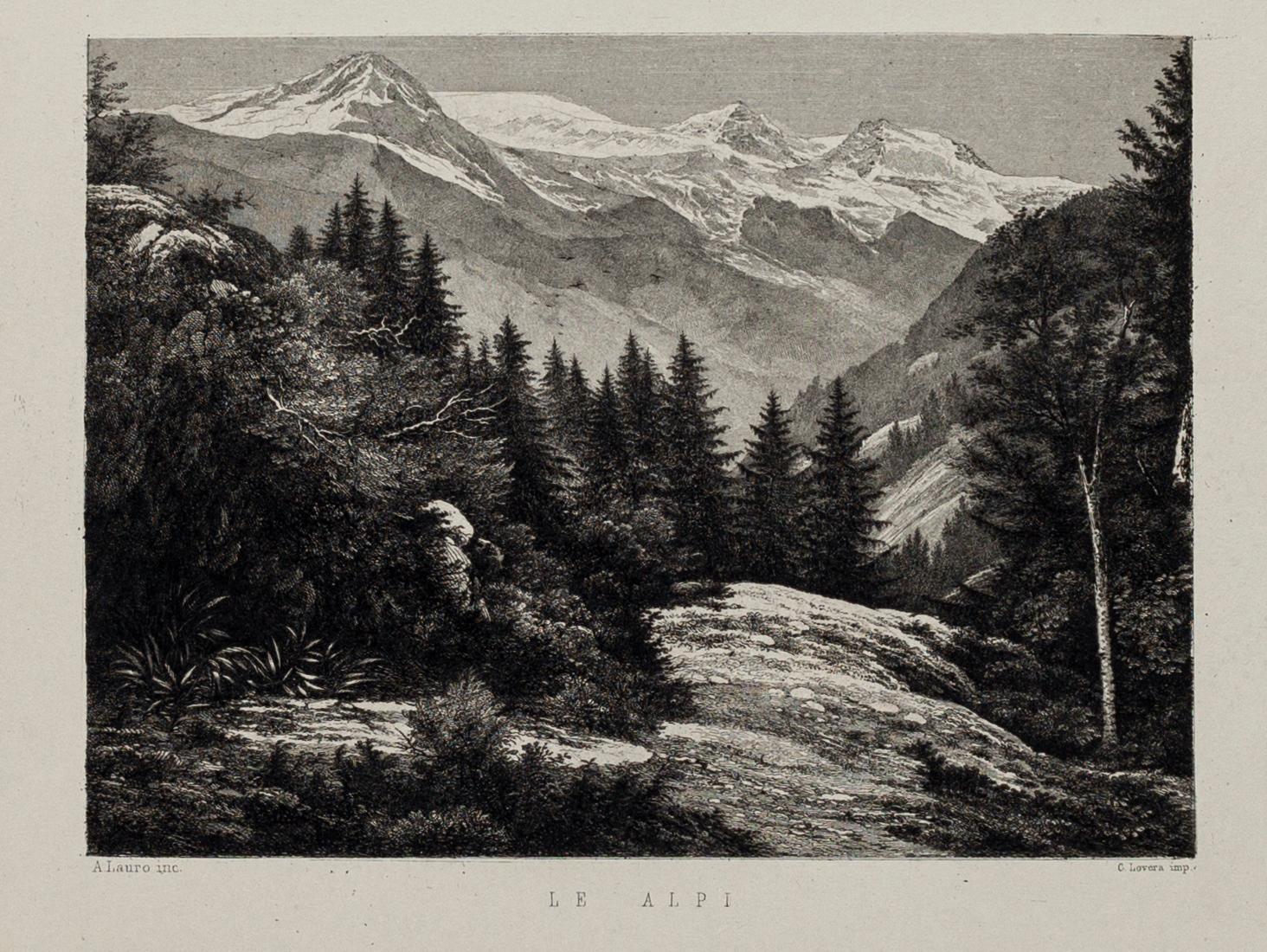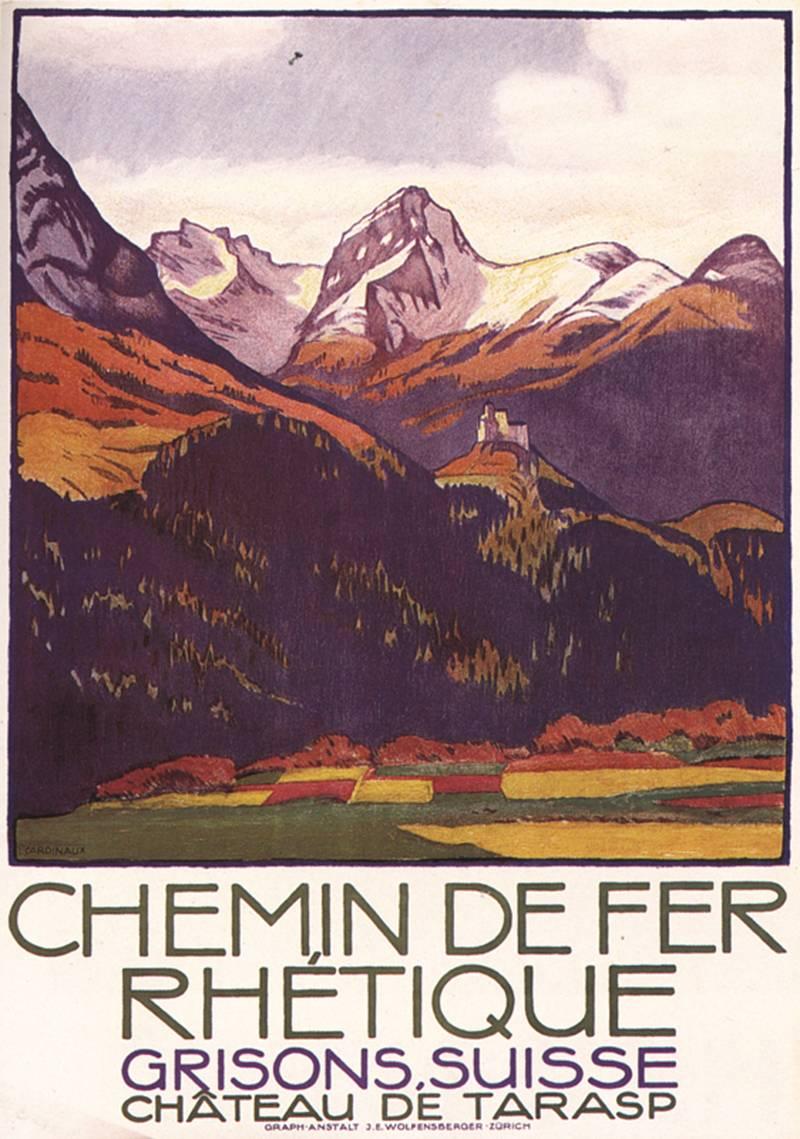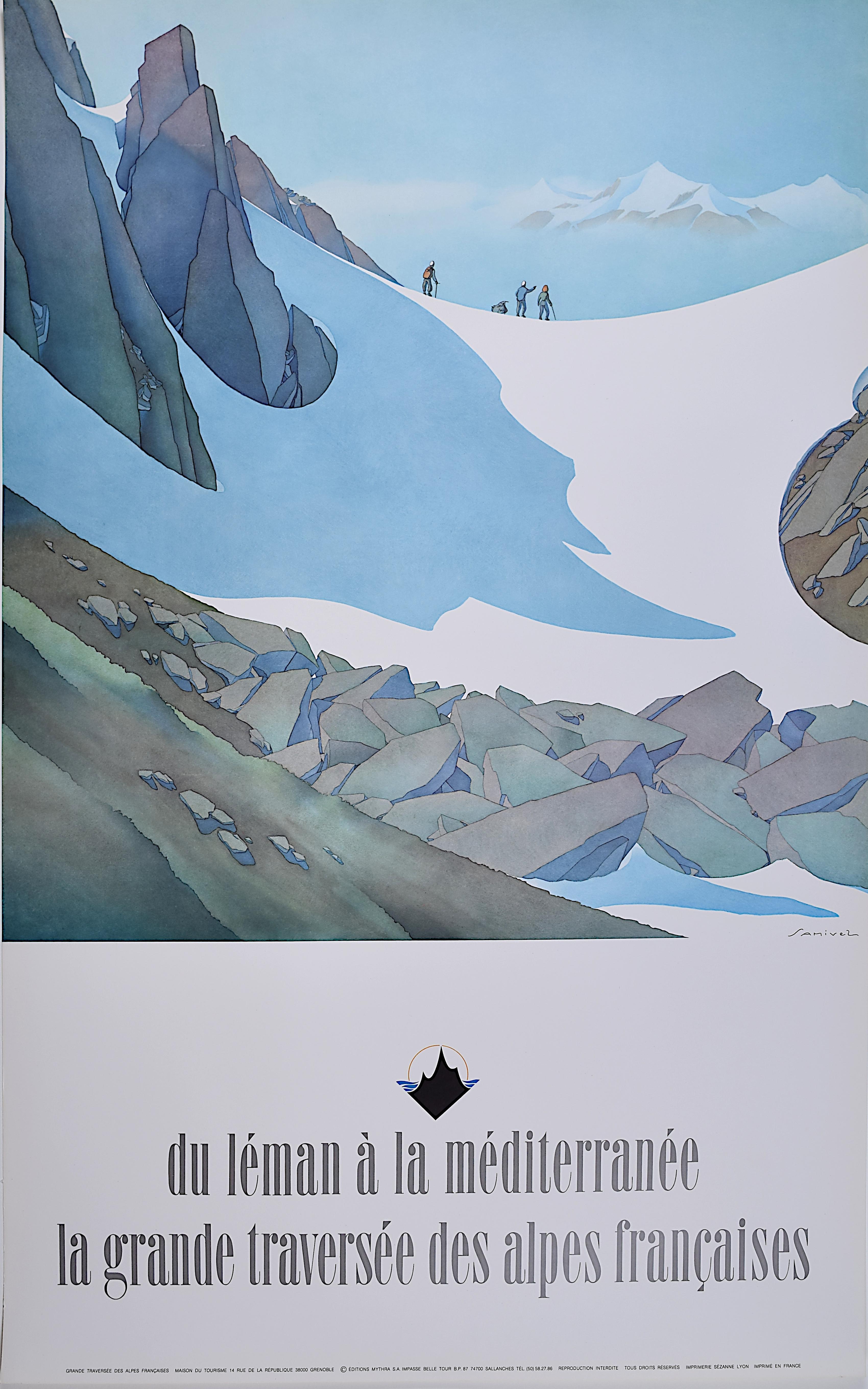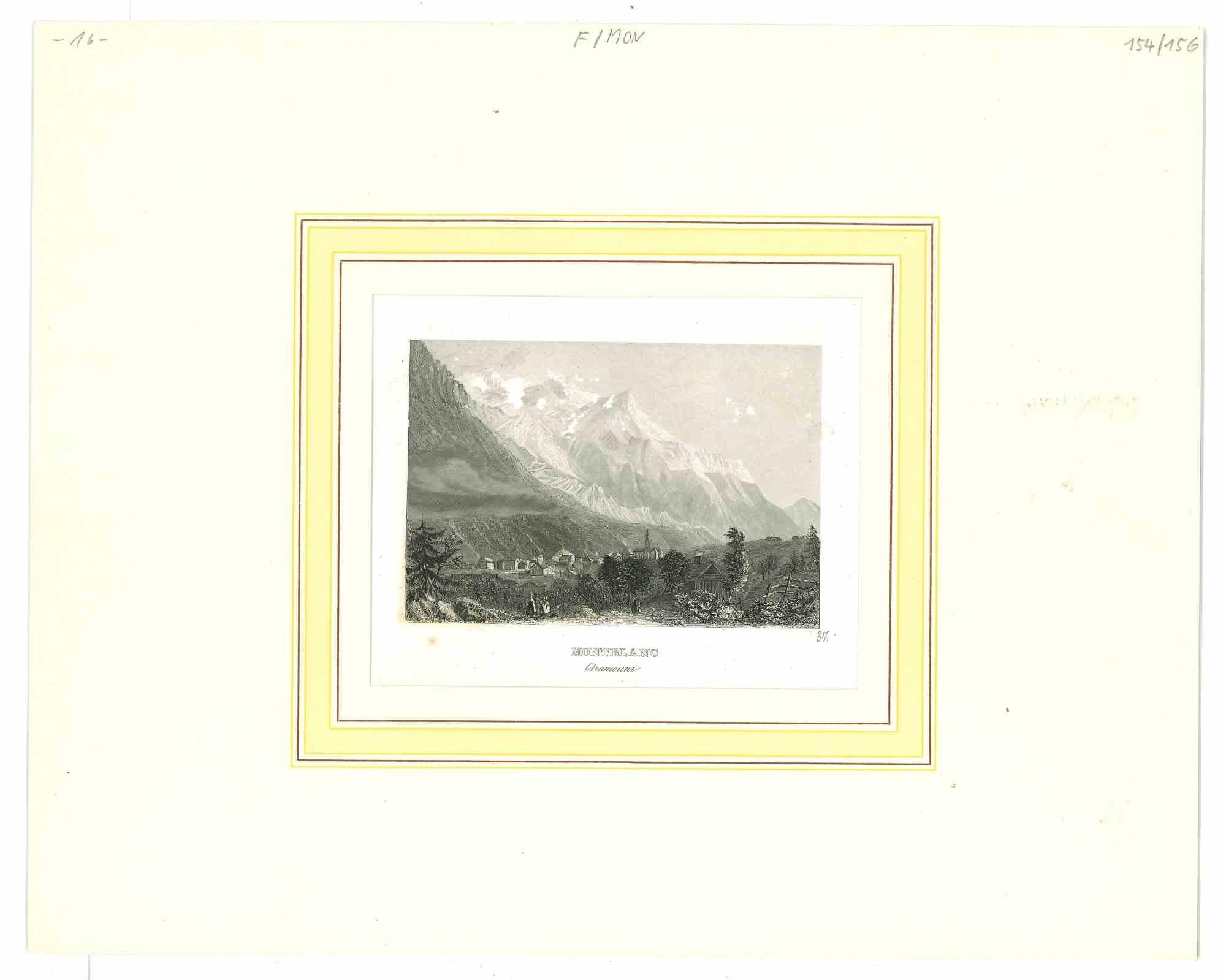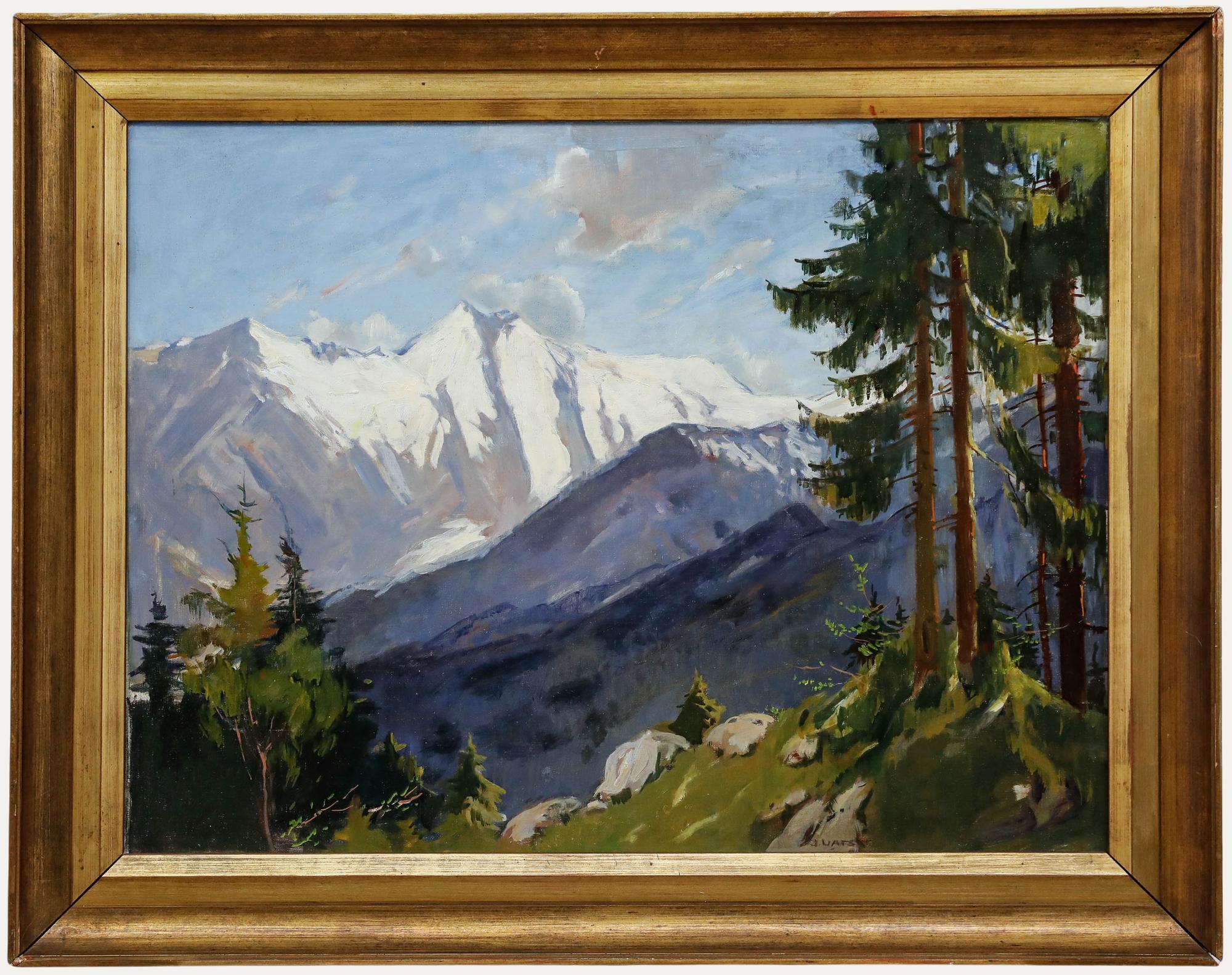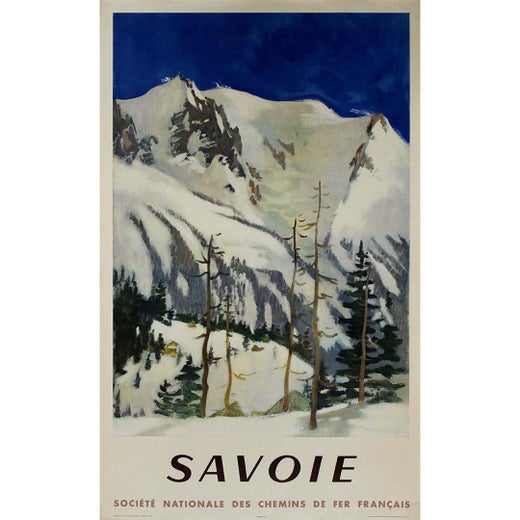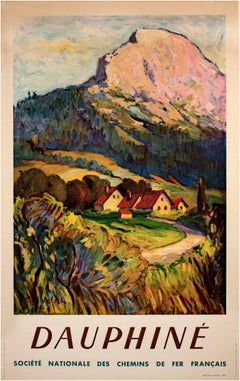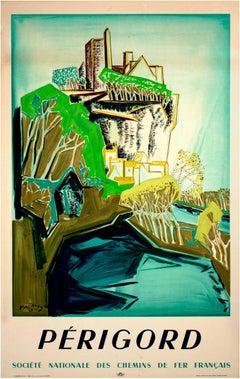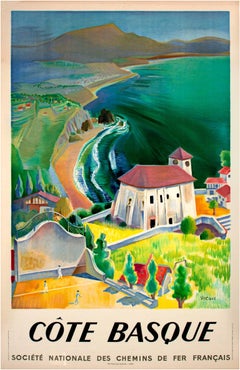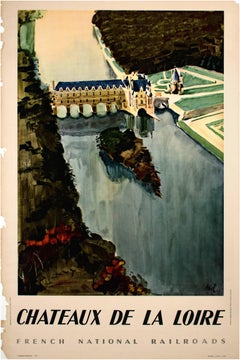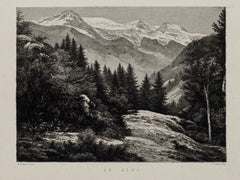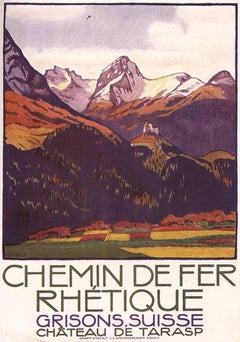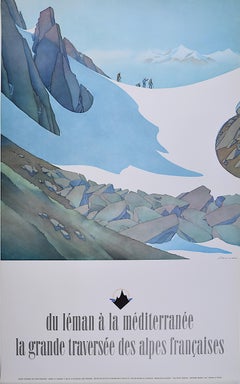Lucien Joseph Fontanarosa"Savoie (Societe National des Chemins de Fer Francais), " by L.J. Fontanarosa1948
1948
About the Item
- Creator:Lucien Joseph Fontanarosa (1912 - 1975, French)
- Creation Year:1948
- Dimensions:Height: 48 in (121.92 cm)Width: 33 in (83.82 cm)
- Medium:
- Period:
- Condition:
- Gallery Location:Milwaukee, WI
- Reference Number:Seller: 13779g1stDibs: LU60531930833
Lucien Joseph Fontanarosa
Lucien Joseph Fontanarosa was born on December 19, 1912, in Paris. He studied at the École Estienne in Paris, a lithographic drawing studio and later at the École Nationale supérieure des Beaux-Arts in Paris. He was highly regarded throughout his entire career by French artists and the French State alike. The SNCF, the French National Rail system, commissioned multiple posters to advertise and celebrate the connected locations on their routes after the Second World War. Savoie created by Fontanarosa showcases an awe-inspiring view of snowy mountaintops of the Alps and was created in this regard. Fontanarosa passed away on April 27, 1975, in Paris.
- ShippingRetrieving quote...Shipping from: Milwaukee, WI
- Return Policy
More From This Seller
View All1940s Other Art Style Landscape Prints
Lithograph
1940s Landscape Prints
Lithograph
1940s Post-War Landscape Prints
Lithograph
21st Century and Contemporary Landscape Prints
Lithograph
1890s Art Nouveau Figurative Prints
Lithograph
1890s Art Nouveau Figurative Prints
Lithograph
You May Also Like
20th Century Modern Figurative Prints
Lithograph
1920s Modern Landscape Prints
Woodcut
1910s Art Deco Landscape Prints
Lithograph
1970s Modern Landscape Prints
Lithograph
Mid-19th Century Modern Figurative Prints
Lithograph
20th Century Landscape Paintings
Oil
